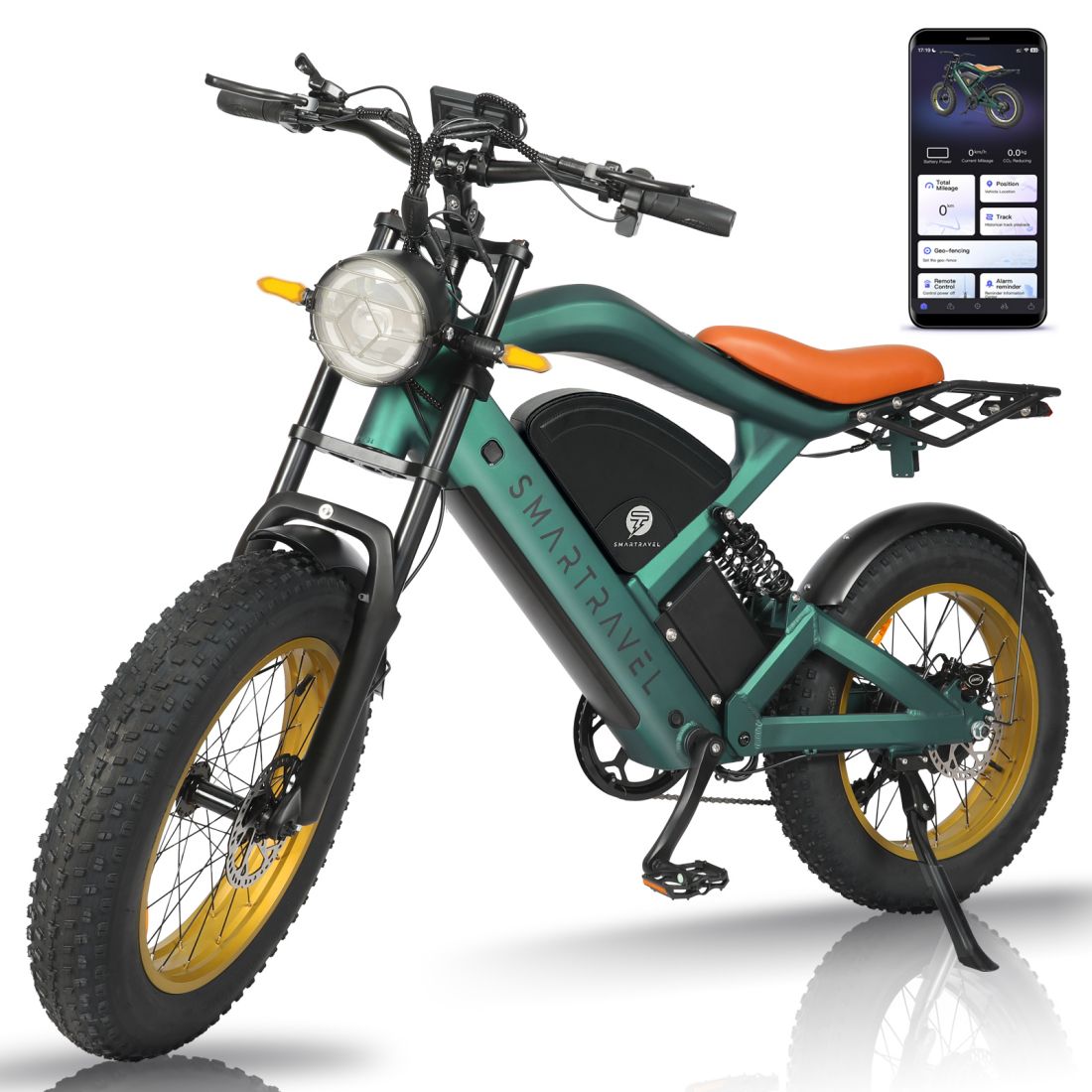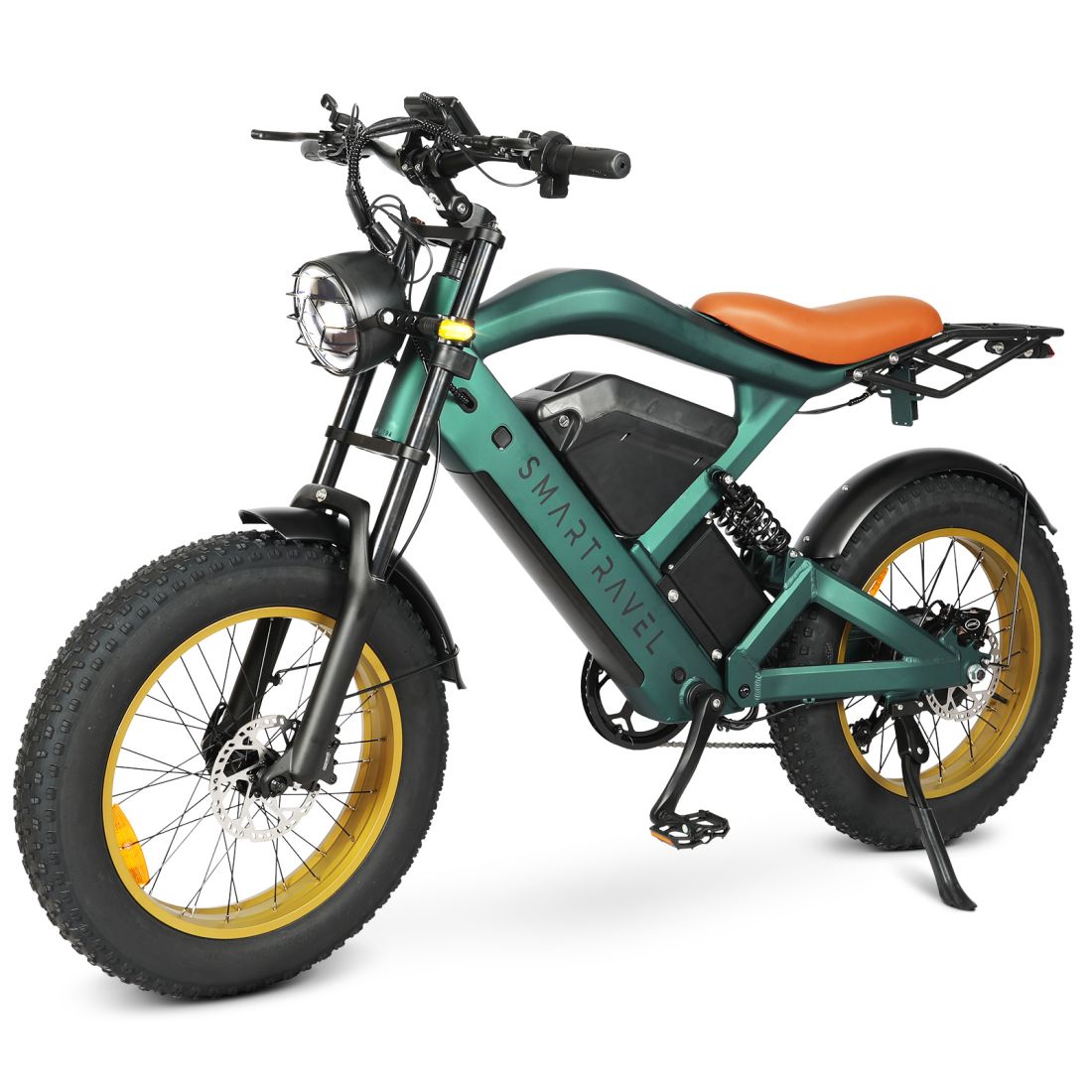What are the wear or equipment for riding an e-bike in different seasons

When we ride, we must wear the right clothes. Different seasons have different temperatures and humidity, so we need different clothes. Only by wearing the right clothes can we make our cycling trip more comfortable and enjoyable. So what kind of clothes do we need in different seasons? Read this guide to tell you what to wear in spring, summer, autumn and winter.
Things To Avoid Wearing While Cycling
1. Cotton Clothing
Cotton absorbs sweat and takes a long time to dry, leading to discomfort and chafing.
2. Baggy Clothes
Loose-fitting clothing can get caught in the bike’s moving parts, posing a safety hazard.
3. Non-Breathable Fabrics
Avoid materials that don't wick moisture away or allow for proper ventilation, as they can cause overheating.
4. Heavy or Bulky Layers
Wearing too many heavy layers can restrict movement and make pedaling difficult. Opt for lightweight, breathable options instead.
5. Flip-Flops or Open-Toed Shoes
These provide inadequate support and protection, increasing the risk of injury.
6. Jewelry
Avoid wearing dangling earrings, necklaces, or bracelets that could get caught or distract you while riding.
What To Wear Cycling in Spring

Base Layer:
Long-Sleeve Moisture-Wicking Shirt: Keeps you dry and comfortable as temperatures fluctuate.
Jacket:
Lightweight, Breathable Jacket: A windproof or water-resistant jacket is ideal for unpredictable spring weather.
Bottoms:
Cycling Shorts or Tights: Depending on the temperature, opt for padded cycling shorts or full-length tights. Leg warmers can be added if it's chilly.
Socks:
Moisture-Wicking Socks: Choose mid-weight socks that provide warmth without overheating.
Footwear:
Cycling Shoes: Comfortable shoes that offer good support and grip are essential.
What To Wear Cycling in Summer

Top:
Short-Sleeve Jersey: Look for a lightweight, moisture-wicking cycling jersey that allows for airflow and keeps sweat away from your skin.
Bottoms:
Padded Cycling Shorts: Choose padded shorts for comfort on longer rides. Bib shorts are another great option for added support.
Socks:
Breathable Socks: Opt for lightweight, moisture-wicking socks that help keep your feet dry.
Footwear:
Ventilated Cycling Shoes: Select shoes with good ventilation and support. Make sure they fit well to avoid discomfort.
What To Wear Cycling in autumn

Base Layer:
Long-Sleeve Moisture-Wicking Shirt: A lightweight, breathable base layer helps keep you dry and warm.
Jacket:
Windproof or Insulated Jacket: A lightweight, water-resistant jacket is ideal for protection against wind and light rain.
Bottoms:
Cycling Tights or Capris: Choose thermal tights for cooler days or capris if the weather is milder. You can also layer with leg warmers.
Socks:
Warm, Moisture-Wicking Socks: Consider thicker socks to keep your feet warm and dry.
Footwear:
Cycling Shoes: Opt for shoes that provide good support. Consider shoe covers for extra warmth and protection from the elements.
What To Wear Cycling in Winter

Base Layer:
Thermal Long-Sleeve Shirt: A moisture-wicking thermal base layer helps trap heat while keeping sweat away from your skin.
Insulating Layer:
Fleece or Insulated Jacket: A mid-layer provides additional warmth. Look for something that allows for breathability.
Outer Layer:
Windproof and Waterproof Jacket: A durable, breathable outer layer protects against wind, rain, and snow.
Bottoms:
Thermal Cycling Tights: Choose insulated tights that provide warmth without restricting movement. You can also layer with thermal shorts underneath.
Socks:
Thick, Moisture-Wicking Socks: Wool or synthetic materials help keep your feet warm and dry.
Footwear:
Cycling Shoes with Insulation: Consider using waterproof shoe covers for added warmth and protection from the elements.




















